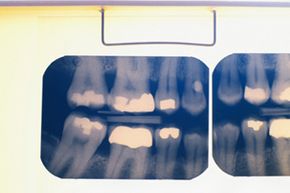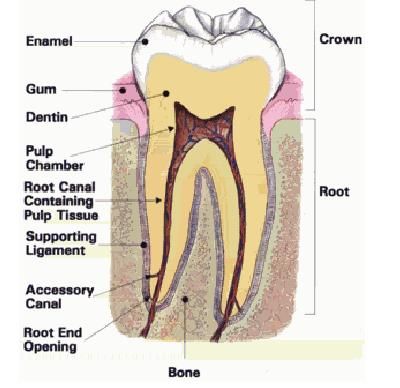Your dentist has probably already warned you about the perils of eating too many sweets and bad dental hygiene. Neglecting your teeth could lead you to a mouthful of cavities. These holes in your teeth aren't just painful -- if you don't have them filled, you could actually lose your teeth.
Cavities form when the bacteria that normally live in your mouth feast on leftover sugars and starches from foods you've eaten. As bacteria eat, they produce acids. When those acids combine with saliva, food particles and the bacteria themselves, they form a hard sticky plaque that coats your teeth and wears away at your tooth enamel.
Advertisement
Your dentist classifies your cavities based on what part of your tooth is involved. Cavities can occur in the pits and grooves of your teeth, or on their smooth surfaces. The former is very common, because it's easy for germs and food to become trapped inside the little cracks and crevices in your teeth. It's harder for plaque to get through the smooth surfaces of your teeth because it must break through the enamel, but this type of cavity covers a wider area of your tooth.
American dentist G.V. Black developed a cavity classification system way back in 1908, and it's still in use today. Black's classification system defines five classes of cavity (the sixth class was added later):
- Class I cavities are in the pits and fissures (cracks) in your teeth.
- Class II cavities are on the sides and chewing surfaces of your premolars and molars in the back of your mouth.
- Class III cavities involve the sides of your incisors and canine teeth in the front of your mouth (which you use to bite and chew food).
- Class IV cavities are located on the sides of your incisor and canine teeth, and they involve the angle where the middle and far side of your teeth connect (incisal angle).
- Class V cavities are on the surface of the teeth closest to the face or tongue and do not involve any pits or grooves.
- Class VI cavities are on the edges of the front teeth, or on the part of the back teeth that touch the jaw.
As we mentioned previously, smooth surface cavities aren't as common, but they may be more serious than cavities that occur in the grooves of your teeth because they cover a wider area of your tooth. Typically, the more of your tooth that is involved, the more damage the cavity will do. Your dentist will treat your cavity based on how much damage has been done. If there isn't much damage, the dentist will drill out the decayed part of the tooth and replace it with a filling. If there is a lot of decay, you'll get a crown made from gold or porcelain to replace the damaged part of the tooth.
For more information on dental care, see the links on the next page.
Advertisement

